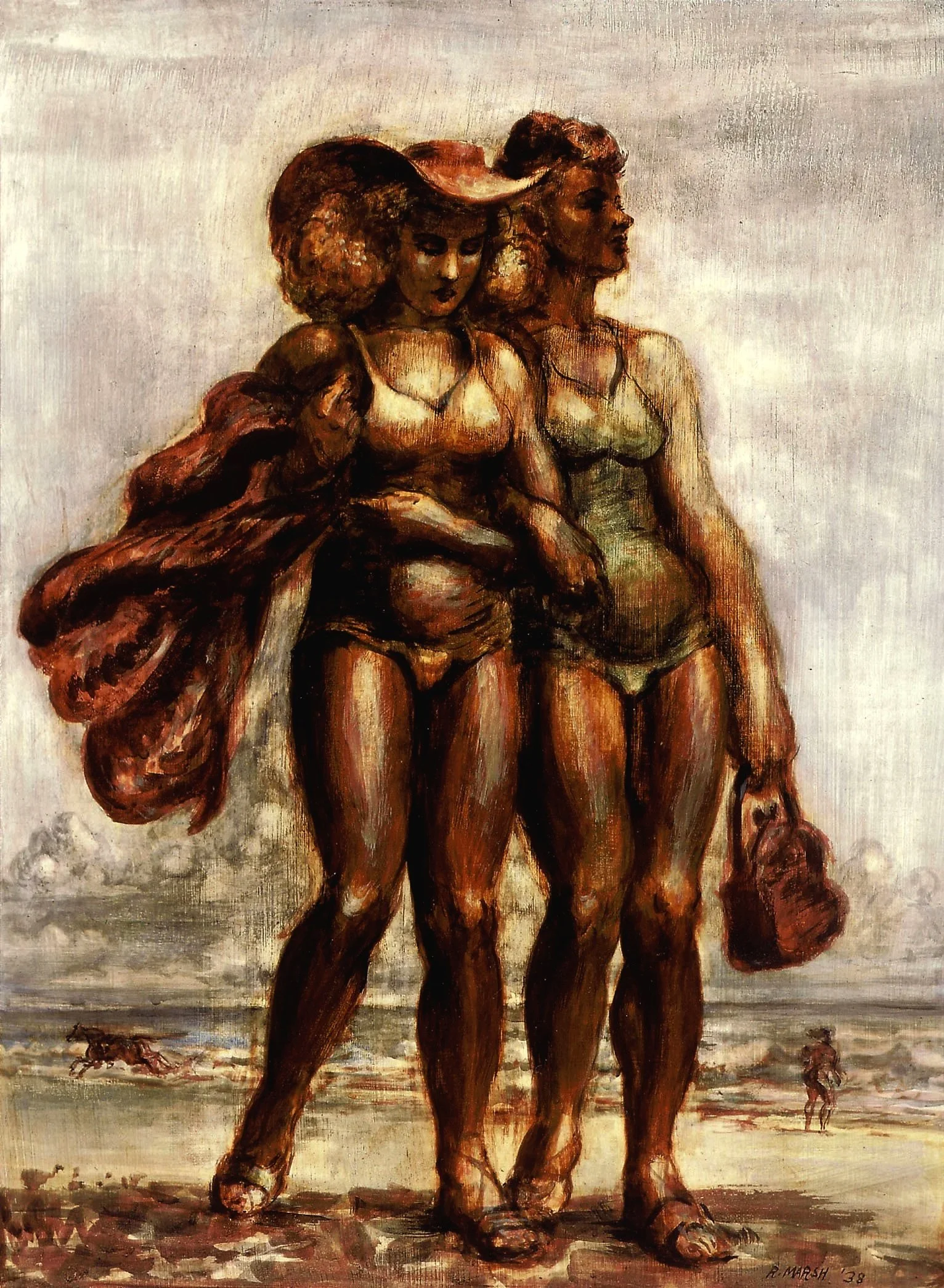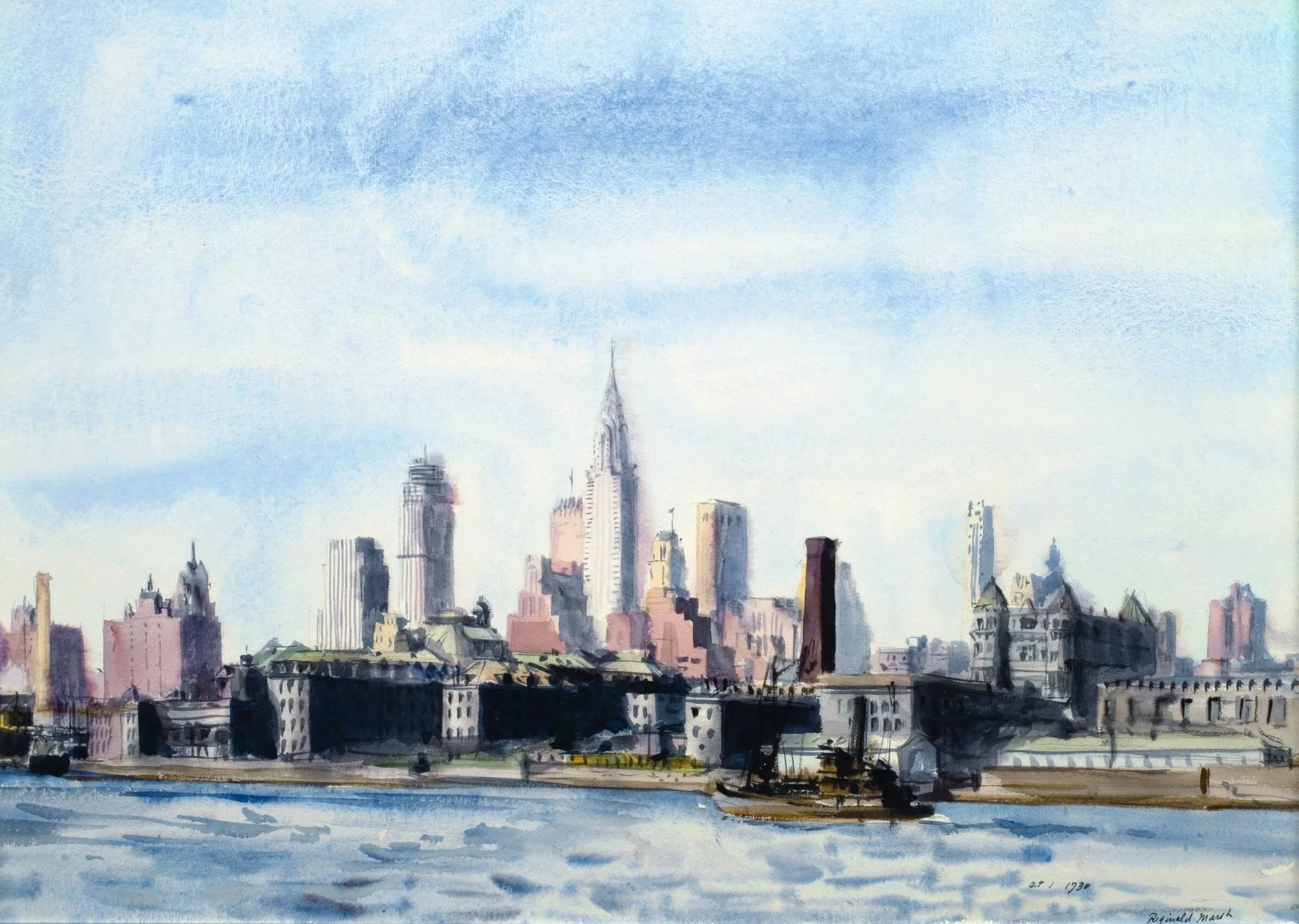REGINALD MARSH (1898-1954)
Available Work | Biography
Biography • Reginald Marsh (1898-1954)
Reginald Marsh was born in Paris, France in 1898, the second son of American artists Fred Dana Marsh and Alice Randall Marsh. His family returned to the U.S. in 1900, settling in New Jersey. The Marsh family moved to New Rochelle, New York in 1914, where Reginald attended the Riverview Military Academy until 1915. Marsh spent his senior year at the Lawrenceville School where he drew for the school's annual. Marsh then attended Yale Art School in 1916-20 where he became the star illustrator for The Yale Record and, later, its art editor. In his newspaper work Marsh exhibited a graphic skill and a gift for pictorial humor.
On graduating from Yale in 1920, Marsh moved to New York City where he supported himself as a freelance illustrator for newspapers and magazines, such as Vanity Fair and Harper's Bazaar. In 1922, Marsh became a staff artist for The Daily News, first drawing city life and then a column of vaudeville illustrations. When The New Yorker began in 1925, Marsh became a staff member, contributing through 1931. These illustration jobs provided Marsh with a good income and a great amount of free time, which allowed him to study painting at the Art Students League on and off through the Twenties with Kenneth Hayes Miller, John Sloan and George Luks. When Marsh began to paint in earnest in 1923, he joined the Whitney Studio Club, where he had one-man exhibitions in 1924 and 1928.
In the early 1920s Marsh made his first trip to Coney Island on a project for Vanity Fair. He was instantly drawn to the raucous environment of extremes, capturing the boardwalks, beaches and sideshows in his sketch books. Marsh often remained in New York for the summer to spend time at Coney Island. The rest of the year Marsh painted industrial subjects which could also be found in the city. He also enjoyed recording the physical and social life of a newly commercialized city, focusing on taxi-dance halls, burlesque, Coney Island, subways and the Bowery. In 1929 Marsh took a studio near Union Square in New York where he remained for most of his life, roaming the streets with his sketch book. The same sketches he worked up for his newspaper and magazine illustrations found their way into his paintings.
The 1930s and 1940s were very successful for Marsh. He exhibited in most of the annual exhibitions of contemporary American art at the Whitney Museum of American Art (1924-1954), the Corcoran Gallery of Art (1932-1957), the Pennsylvania Academy of the Fine Arts (1932-1952), the Art Institute of Chicago (1928-1949) and the National Academy of Design (1927-1949). He also had many one-man exhibitions at the Frank K. Rehn Galleries in New York. The recently opened Museum of Modern Art included Marsh in their first large international group show of arts, titled Forty-Six Artists under 35 in the spring of 1930. In the fall of 1934, the Treasury Department set up its Section of Painting and Sculpture, a smaller and more selective project than the WPA art projects. Their first project was for two new buildings in Washington, DC. Marsh was commissioned to paint a mural in the Post Office Building, depicting the processing and sorting of mail. Marsh chose to work in fresco, studying with Olle Nordmark, an expert on the fresco technique, before executing the commission. Marsh was also chosen to decorate the rotunda of the U.S. Customs House in New York in 1937, painting eight successive stages in the arrival of an ocean liner to New York Harbor.
Marsh began teaching at the Art Students League in 1935 where he soon became one of the most popular teachers. His interest in the human form culminated in a book, Anatomy for Artists, published in 1945, which was based largely on drawings and paintings of the human body by Old Masters, redrawn by Marsh to demonstrate how the forms were achieved.
In the spring of 1954, Marsh was chosen to receive the gold medal of the National Institute of Arts and Letters, an extremely high award in the American cultural world. Marsh died in July of the same year.









